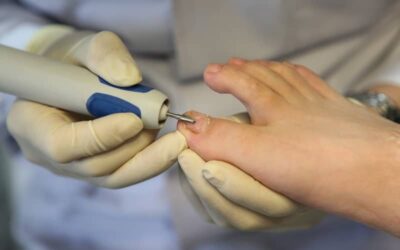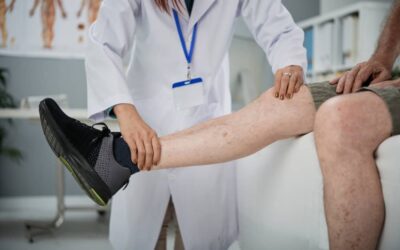Some surprises, like a work bonus or an unexpected visit from a friend, are welcome and exciting. Others, like a flat tire or a broken refrigerator, are rather unpleasant and put a damper on your day. When it comes to your health, the more surprises you can eliminate by learning and preparing, the better.
Let’s eliminate any surprises that may be in store for you in regard to your ganglion cyst.
What is a Ganglion Cyst?
Ganglion cysts are small lumps that appear near joints or tendons. These smooth lumps are most commonly found on wrists and feet. The lump can feel either hard or soft. The size of the cyst can vary significantly, from the size of a pea to the size of an egg. The average size is just over one inch in diameter.
Under the surface, ganglion cysts are small sacs filled with either fluid, air, or a gel-like substance. If pushed, it might move around.
Why Do I Have a Ganglion Cyst?
The cause of ganglion cysts isn’t exactly known. It is hypothesized that they form after a trauma to the joint, but many patients with ganglion cysts report that they did not receive trauma to the area their cyst forms.
Who is at Risk for Ganglion Cysts?
Ganglion cysts are three times more common in females than males. They are most often in people between the ages of 15 and 40.
The Best Case Scenario
Ganglion cysts, like most foot cysts, are not typically cancerous. As with any lump or bump that unnaturally shows up, though, confirmation with your doctor is best. Your doctor may want to take a sample from the cyst to rule out anything nefarious. One-third of the time, ganglion cysts do not cause any pain, either; they are just an inconvenience.
After confirmation from a podiatrist that your ganglion cyst is not cancerous, you can breathe easily. Ganglion cysts will often disappear on their own.
Options for Painful Ganglion Cysts
The other two-thirds of the time, ganglion cysts are painful. The cyst may have accompanying tingling, discomfort, numbness, or pain depending on the location of the cyst in relation to nerves and other tissues. It may also cause irritation if the protrusion is located where your shoes typically hit your foot.
- At Home Pain Management. To help make the pain from your cyst be more tolerable, you can try putting ice on the cyst, taking over-the-counter pain medications, and limiting your movements. Pick out footwear that does not put pressure on the cyst when possible.
- Aspiration and Steroid. If you are in too much pain to wait for your ganglion cyst to shrink on its own, you and your podiatrist can discuss treatment options. One option is an aspiration, where a long, thin needle is used to drain the cyst. After the fluid has been removed, a steroid is injected in its place. This will sometimes be the end of the cyst, or it may just be temporary until the cyst returns.
- Surgery. If aspiration is unsuccessful and your cyst is uncomfortable, your foot and ankle doctor may give you the option to surgically remove the cyst. A ganglion cyst removal is a simple procedure that increases your chance of successfully getting rid of the cyst for good.
Can I Prevent a Cyst?
Since the cause of ganglion cysts isn’t known, prevention is difficult. Avoiding injury to your joints can help lower your risk since there seems to be a correlation, but it isn’t foolproof. Other ideas that may help you avoid ganglion cysts include resting your wrists, feet, and ankles after strenuous use – stretching the wrists, feet, and ankles well. Avoiding tobacco is also a good idea, as it can weaken tendons.
Don’t Try This at Home
Previously, hitting a cyst with a hard object was considered a treatment option. Do not attempt this. It won’t work, you will injure your foot further, and your book may never forget you.
Another at-home cyst treatment that you should avoid is trying to drain the fluid yourself. Attempting to pop or drain the cyst yourself is asking for infection and more complications than if you let a professional handle it.
If you suspect you have a ganglion cyst, call your favorite podiatrist to have them take a look at it, especially if it is giving you grief. Expect a consultation, where they will give you your options to help manage the pain (sans surprises).



